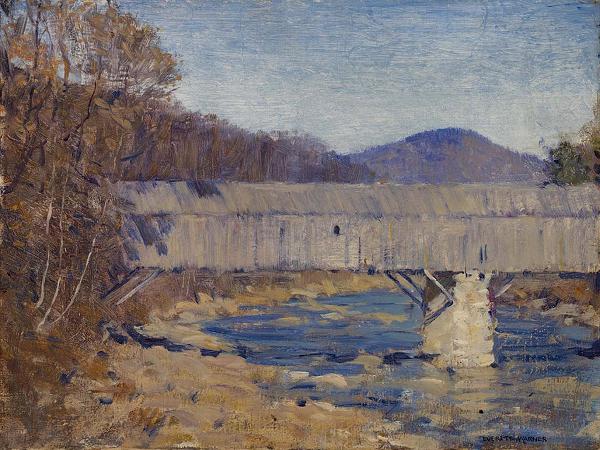
Everett Warner. Everett Longley Warner was an American Impressionist painter and printmaker, as well as a leading contributor to US Navy camouflage during both World Wars.
Warner was born in the small town of Vinton, Iowa, where his father was a lawyer. His mother was descended from a line of prominent missionaries, who worked extensively for years with the Dakota Sioux Indians, translating and preserving their traditional language.
Warner spent part of his childhood in Iowa, then moved to Washington, D.C., when his father was appointed Examiner for the Bureau of Pensions. While completing high school, he also went to classes at the Corcoran Museum and the Washington Art Students League.
Following that, he was employed for several years as an art critic for the Evening Star. In 1900, he moved to New York and studied at the Art Students League with life drawing master George Bridgman and illustrator Walter Clark.
His work was soon selected for inclusion in some of the country's most prestigious art competitions, at the Art Institute of Chicago, the Pennsylvania Academy of the Fine Arts, the National Academy of Design, In 1903, with earnings from his painting sales, Warner traveled to Europe, where he studied in Paris at the Académie Julian, while also making sketching trips to Italy, Germany, Spain, the Netherlands, and other countries. Returning permanently to the US in 1909, he became affilia
Warner was born in the small town of Vinton, Iowa, where his father was a lawyer. His mother was descended from a line of prominent missionaries, who worked extensively for years with the Dakota Sioux Indians, translating and preserving their traditional language.
Warner spent part of his childhood in Iowa, then moved to Washington, D.C., when his father was appointed Examiner for the Bureau of Pensions. While completing high school, he also went to classes at the Corcoran Museum and the Washington Art Students League.
Following that, he was employed for several years as an art critic for the Evening Star. In 1900, he moved to New York and studied at the Art Students League with life drawing master George Bridgman and illustrator Walter Clark.
His work was soon selected for inclusion in some of the country's most prestigious art competitions, at the Art Institute of Chicago, the Pennsylvania Academy of the Fine Arts, the National Academy of Design, In 1903, with earnings from his painting sales, Warner traveled to Europe, where he studied in Paris at the Académie Julian, while also making sketching trips to Italy, Germany, Spain, the Netherlands, and other countries. Returning permanently to the US in 1909, he became affilia
Wikipedia ...